Basics of Anatomy: Elbow and Wrist Joints
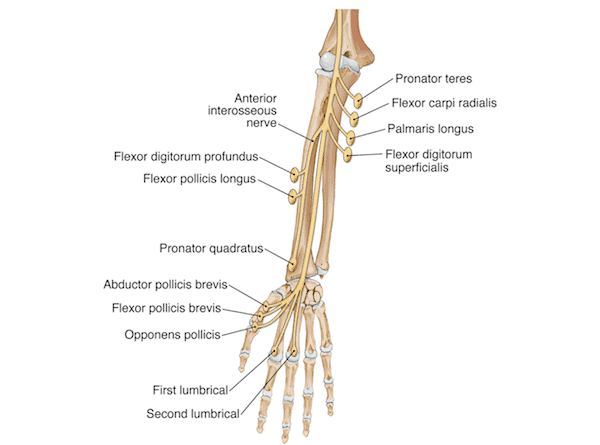
Have you noticed how often you use your arms? Have you ever stopped to think of how our fingers, the oppositional thumb, the mobile wrist and elbow joints make us who we are as humans? When our ancestors evolved from quadrupedal to bipedal primates, it freed their hands to use stone tools, hunt and protect their infants better. What began as a means of survival evolved into a means of expression through gestures and later into fine motor skills. Now, the anatomy of our hands allows us to perform numerous daily functions. We groom ourselves, cook and eat, write and paint, play musical instruments and different games, and in this technological age, work and type on our devices with our hands. Let’s look at two of the joints which make this possible: the wrist and the elbow joint.
Elbow Joint
The elbow is the joint connecting the upper arm to the forearm. Like the knee, it a hinge-type synovial joint complex.
Anatomy
There are three bones that comprise the elbow joint: the humerus, the radius and the ulna. These bones give rise to three joints. The humeroulnar joint and the humeroradial joint, which give the elbow its hinge properties. The superior radioulnar joint, on the other hand, is a pivot joint which allows the rotational movement of the radius on the ulna.
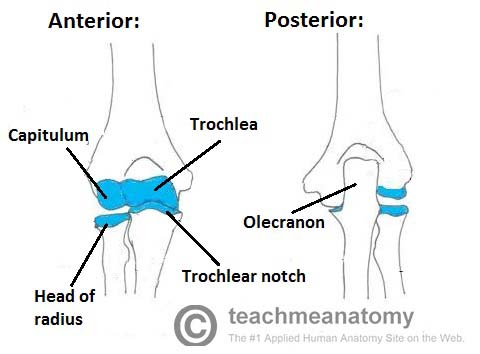
What gives the elbow joint its prominent pointed shape is the olecranon which is the projection of the ulna at the back. Like the knee joint, the elbow has bursae for cushioning and ligaments which strengthen the joint.
Function
The movements of the elbow involve the movement of the forearm at the elbow joint. Flexion is caused by the biceps brachii and the brachialis, and the extension is caused by the triceps. Supination and pronation occur at the superior radioulnar joint when we keep the elbow at a 90-degree angle and just flip our palms down and up.
Dysfunction
Most of the flexor and extensor muscles in the forearm have a common tendinous origin from the epicondyle ligaments. Sportspersons can develop an overuse strain of the common tendon, which results in pain and inflammation around the area of the affected epicondyle. Tennis elbow, then, is the inflammation or micro-tearing of the tendons that join the forearm muscles on the outside of the elbow. These are the extensor muscles that attach to the lateral epicondyle.
Golfer’s elbow, on the other hand, is the inflammation of the tendons that join the forearms muscles on the inside of the elbow, which attach to the medial epicondyle.
Wrist Joint
Anatomy
Our hand, positioned at the end of the upper limb, is connected to it by the wrist joint. Eight small bones at the base of the hand form the carpus. Three of these bones articulate with the radius bone of the arm and its articular disk to form the radiocarpal joint which we know as the wrist joint. The ulna of the arm doesn’t form part of the wrist joint but it is a part of the elbow joint.
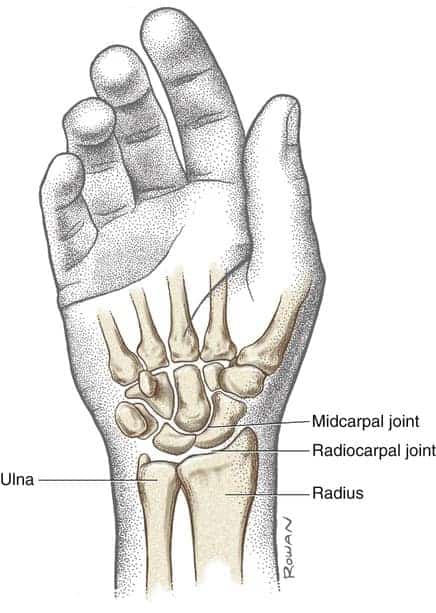
Stability of the wrist is provided by ligaments. The flexor retinaculum ligament along with the carpal bones forms a canal called the carpal tunnel, through which nerves, blood vessels, and muscle tendons pass through.
Function
Since it is an ellipsoidal synovial joint. it allows for movement in two planes as opposed to the hinge joints. So, the primary movements of the wrist joint are flexion, extension, abduction, and adduction. The movement of pronation and supination occurs at the radioulnar joint, which articulates with the disk and gives more freedom of movement to the radiocarpal joint. Also, the oppositional thumb, which is one of the unique features in apes and humans, is aided by the wrist joint.
The wrist acts as a fulcrum for the long extrinsic muscles and tendons of the arm. Moreover, multiple tiny ligaments from the wrist connect to the intrinsic muscles of the hand. These muscles are very important for fine motor skills.
Dysfunction
The wrist is prone to fractures. They commonly occur when one falls on an outstretched hand.
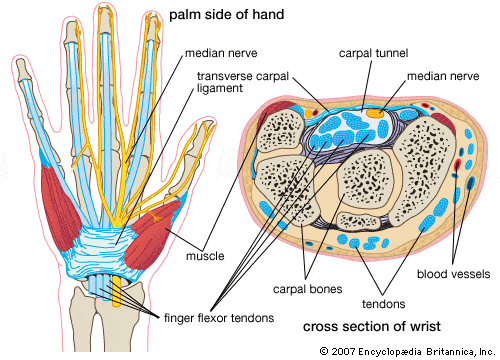
Another common problem that occurs is the compression of the median nerve which passes through the carpal tunnel. Known as carpal tunnel syndrome, this leads to symptoms of tingling, numbness and weakness in the arm and hand. Apart from inflammatory diseases, neurological damage and birth defect, repetitive movements could also cause the carpal tunnel syndrome.

A new age problem that is common with millennials, is the snuff box irritation. The snuff box is this triangular space beneath the thumb. The long tendon of the thumb gets irritated due the over use due to typing on mobile phones.
Apart from this, wrist joints and femurs are points for checking level of osteoporosis.
Wrist and Elbow in Pilates
Most of the dysfunctions in the wrist and elbow involve irritation of tendons or ligaments. Therefore, it is important not to strain the ligaments and tendons by aligning them properly during workouts. These joints have evolved into non-weight bearing joints. Hence, when we load them by getting into the all-4s or plank position, or when we lift heavy weights in our hands, like dumbbells, therabands, etc. we need to check the position of the wrist and the elbow.
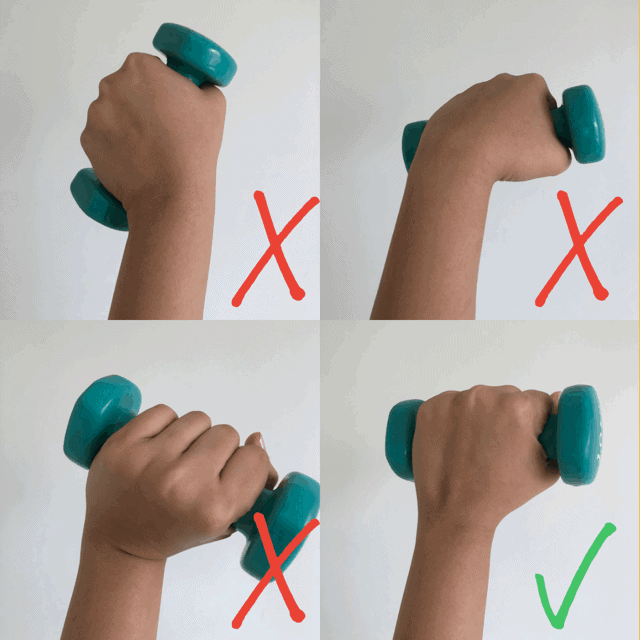
In the all 4s, we have to make sure that there is minimal creasing in the wrist and the eyes of the elbow need to be facing inwards towards each other. And while lifting something heavy, the back of the hand should be in line with the forearm.
Conclusion
Some biologists believe that the development of the human hand led indirectly to the development of our large and complex brains. When we look at the motor homunculus, you will see how much of the brain works on just the functions of the hand and especially the thumb. This representation of the human body shows a neurological map of the areas and proportions of the human brain dedicated to processing motor functions for different parts of the body.
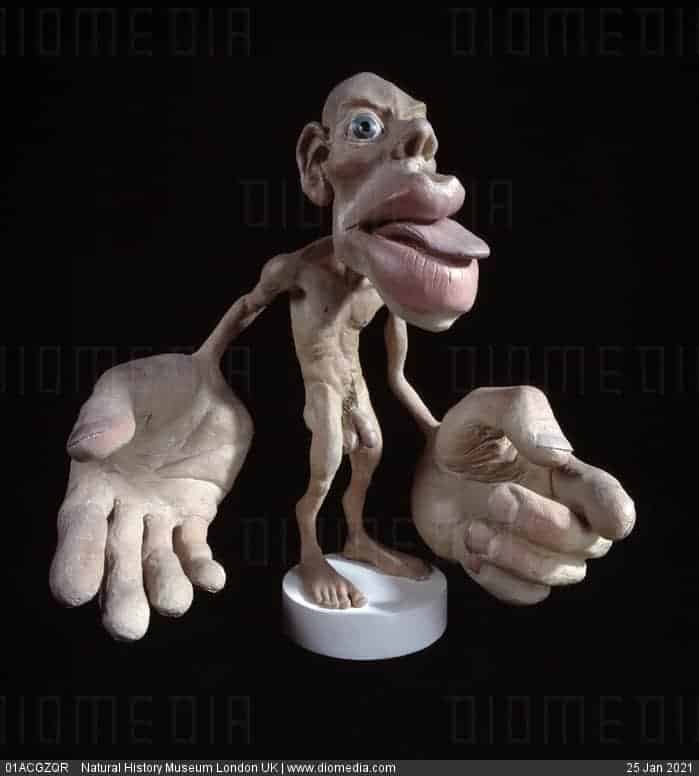
Motor homunculuc
The hand’s existence allowed humans to manipulate, interact with, explore and gain information from the environment. With this, we learned to use tools, develop language, and other elaborate systems of shared meanings, what we now know as culture. While you go about your daily tasks, don’t forget to align your wrist and relax your elbow, lest you strain the beautiful evolutionary tools that Nature has provided you with.
To know more about the Wonder of Anatomy and Movement, sign up for our series of workshops where you learn the ins and outs of the different parts of the human body and how you can keep them functioning!
